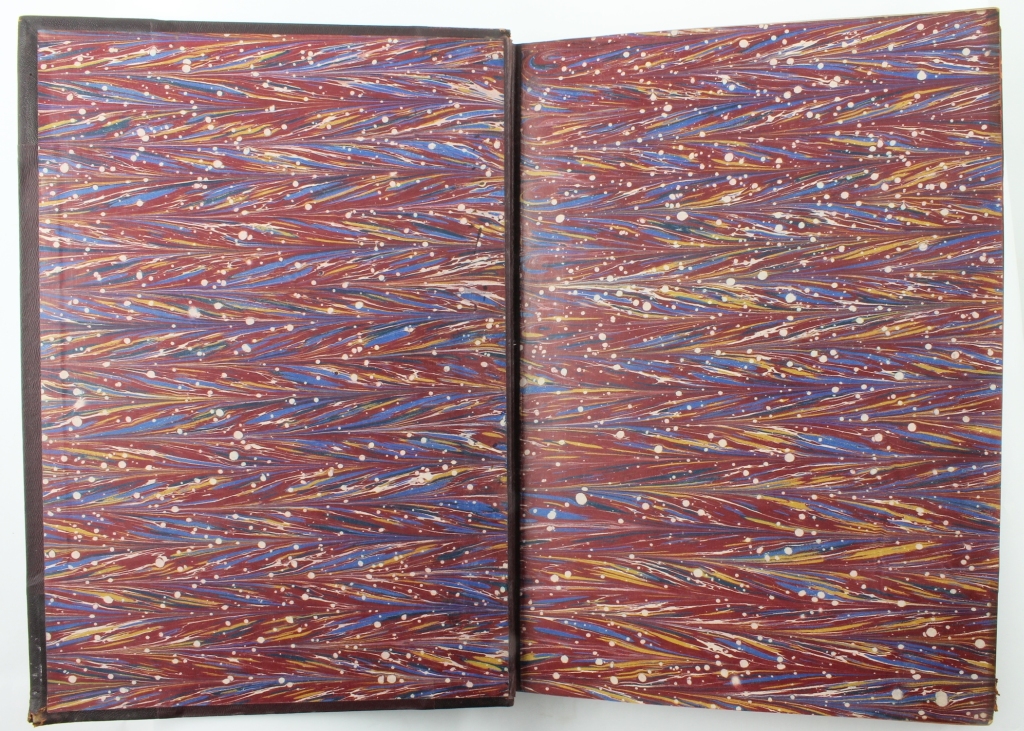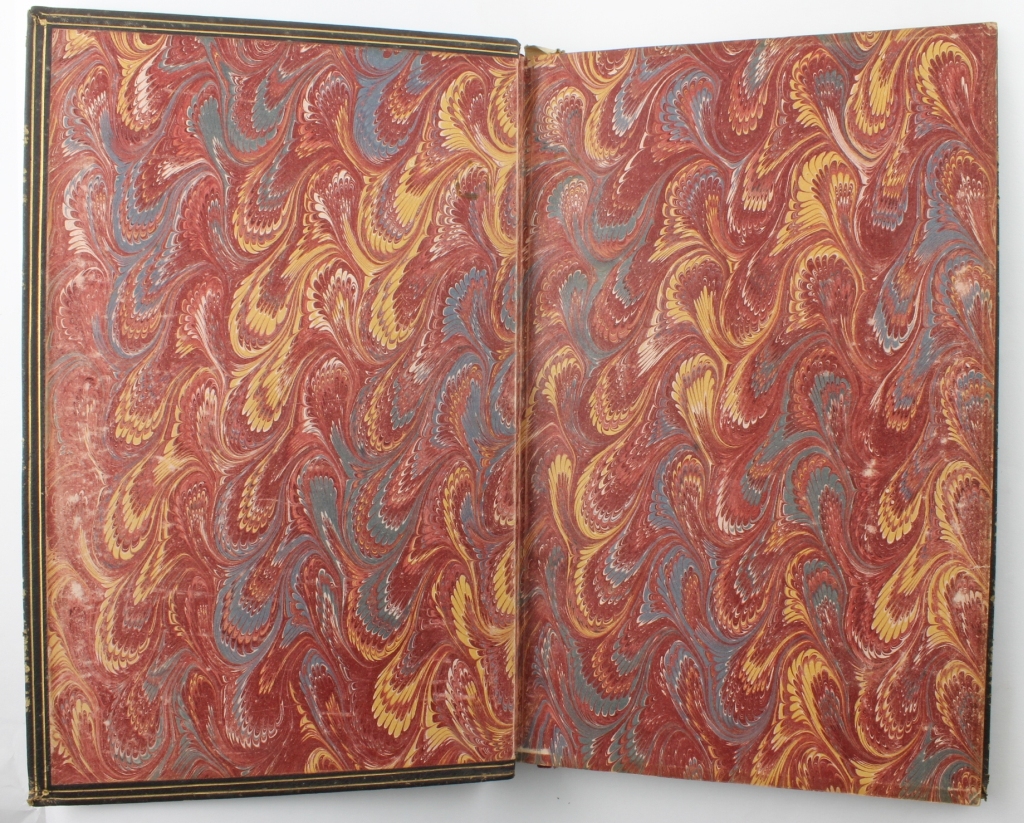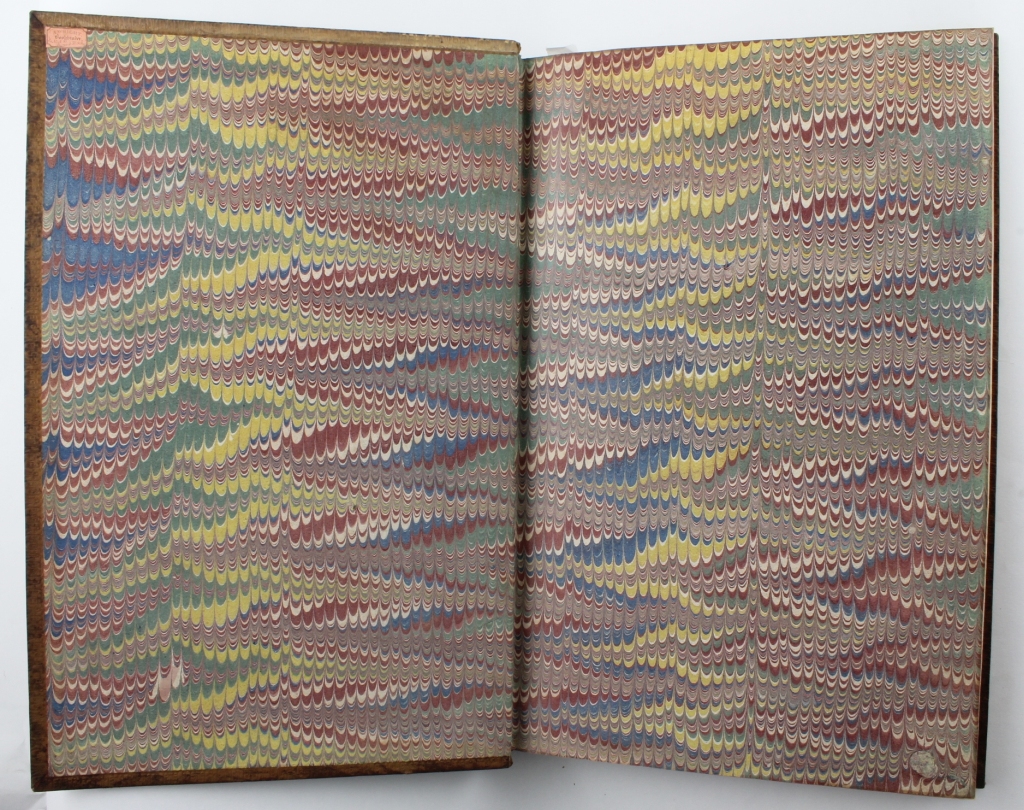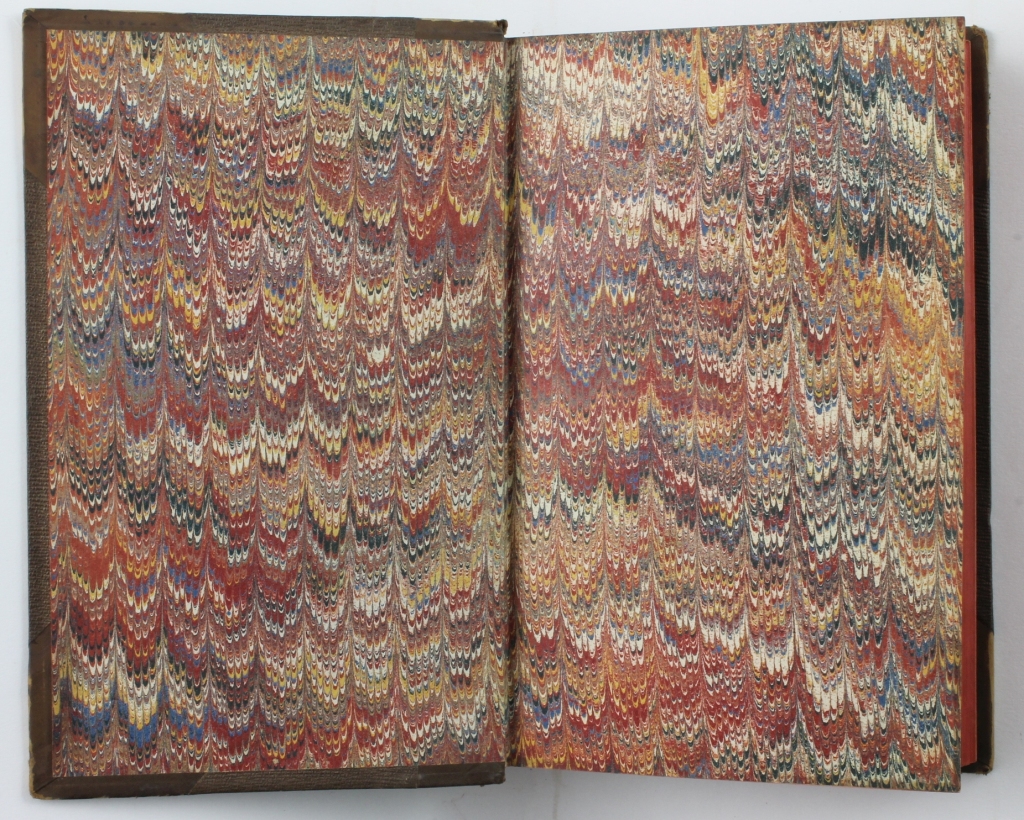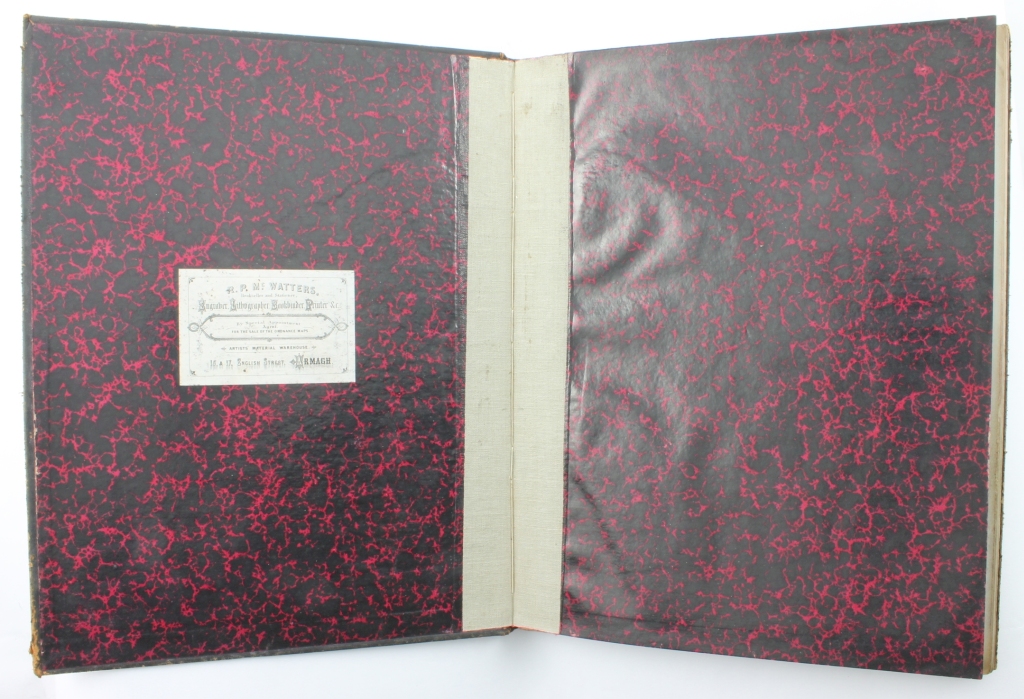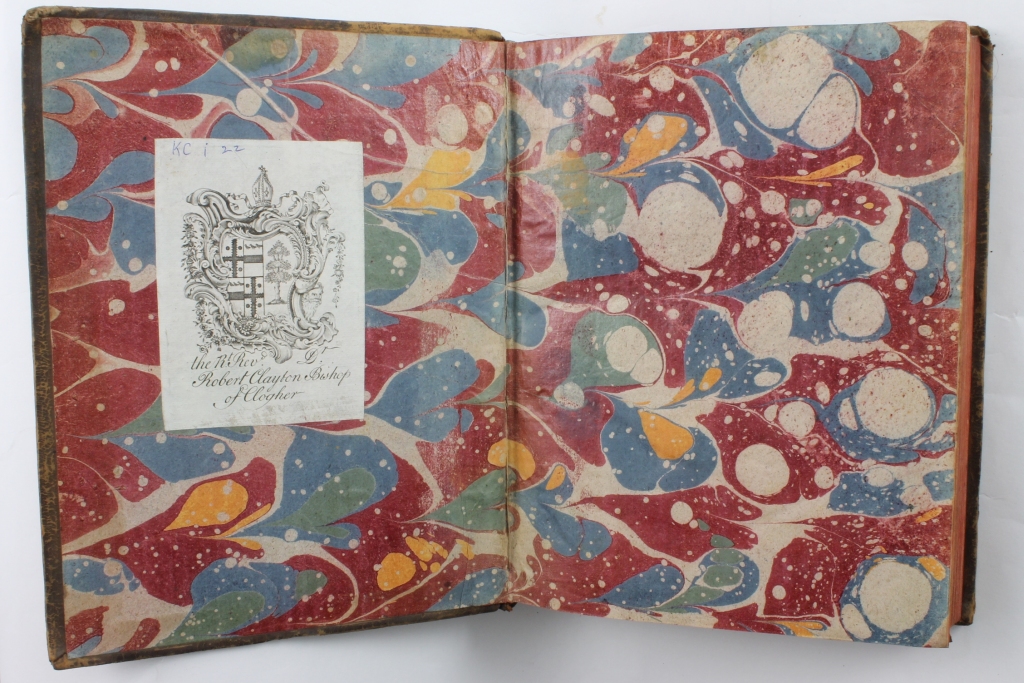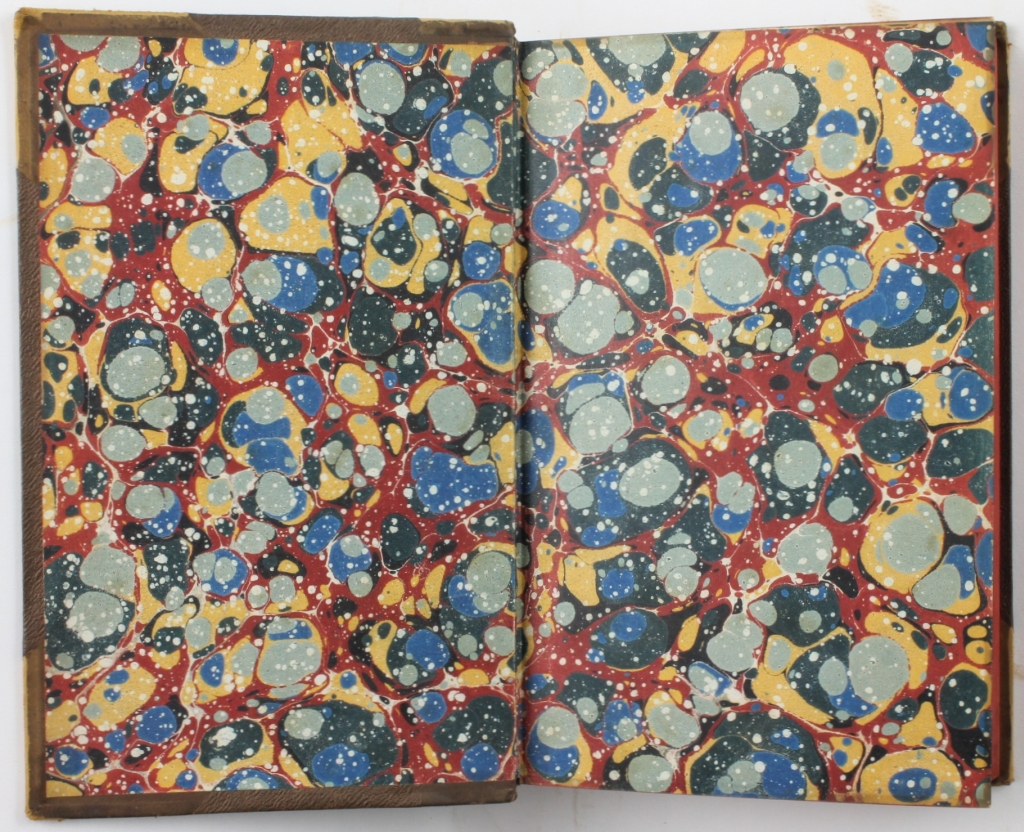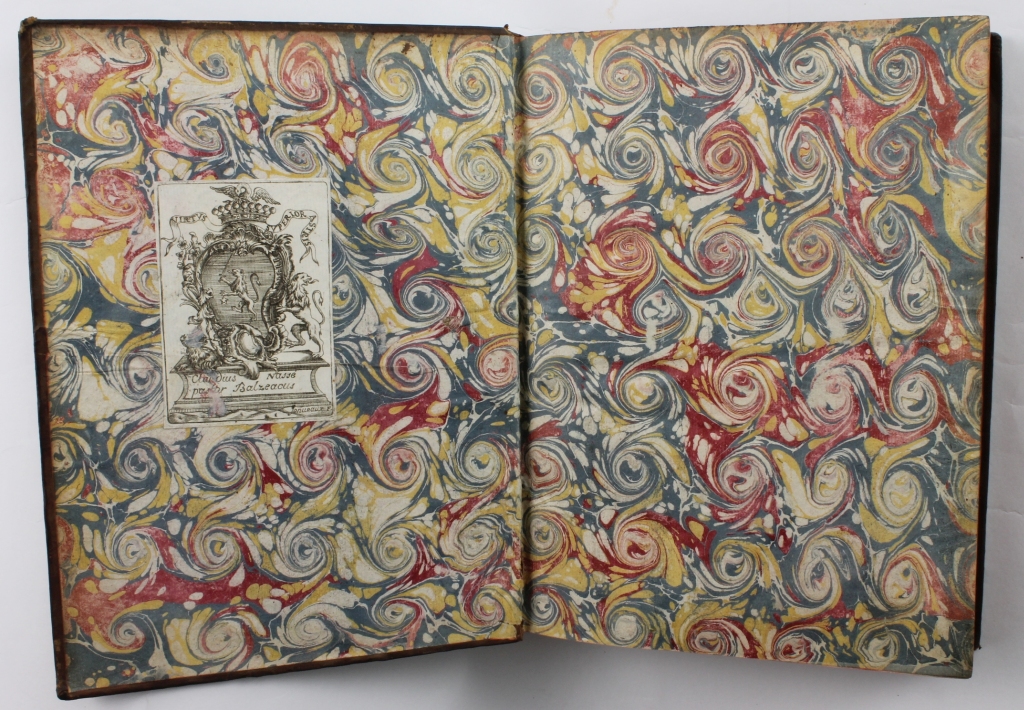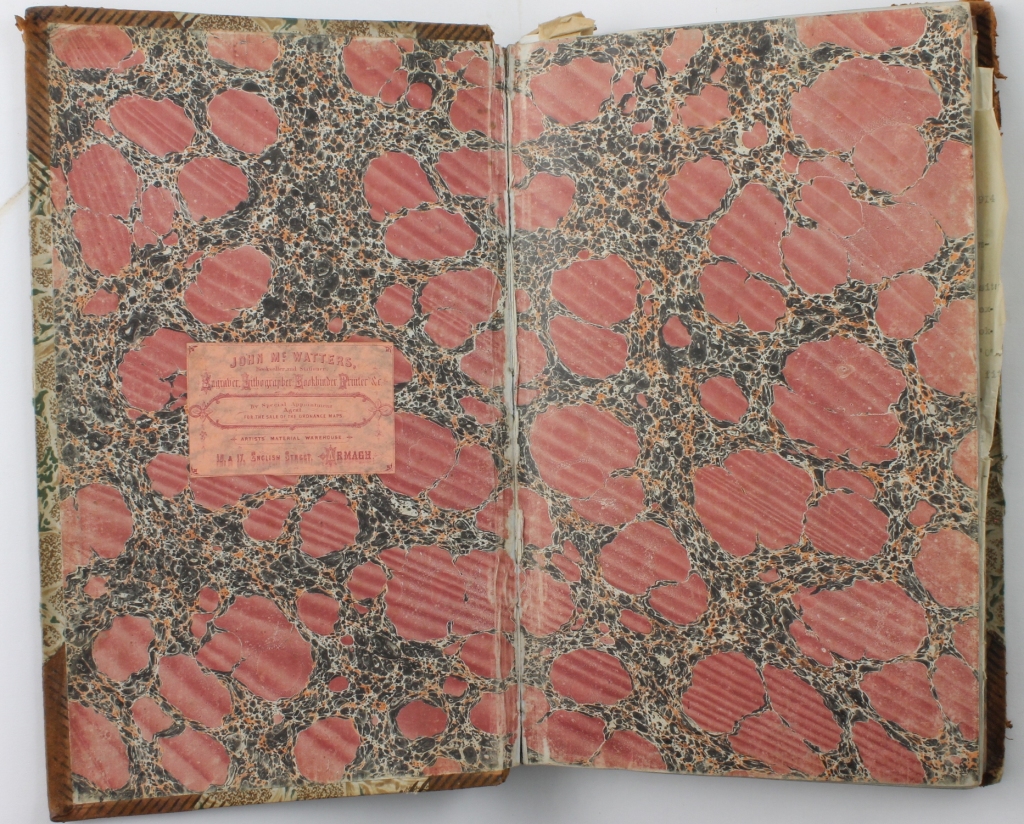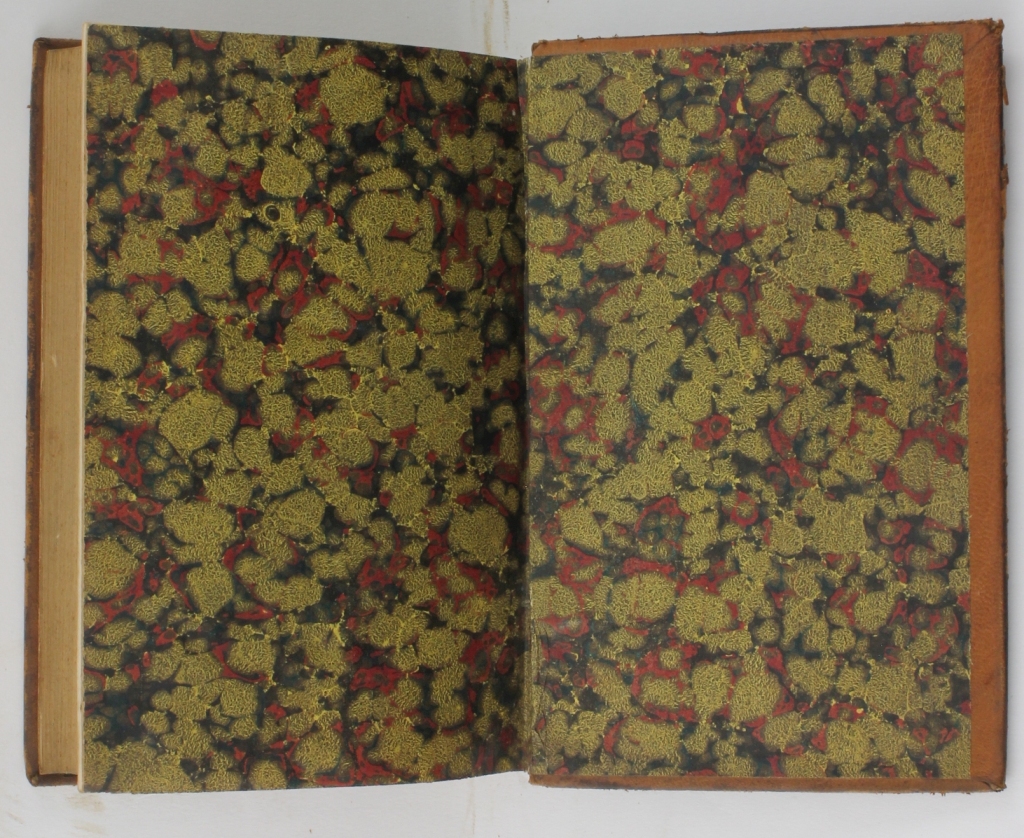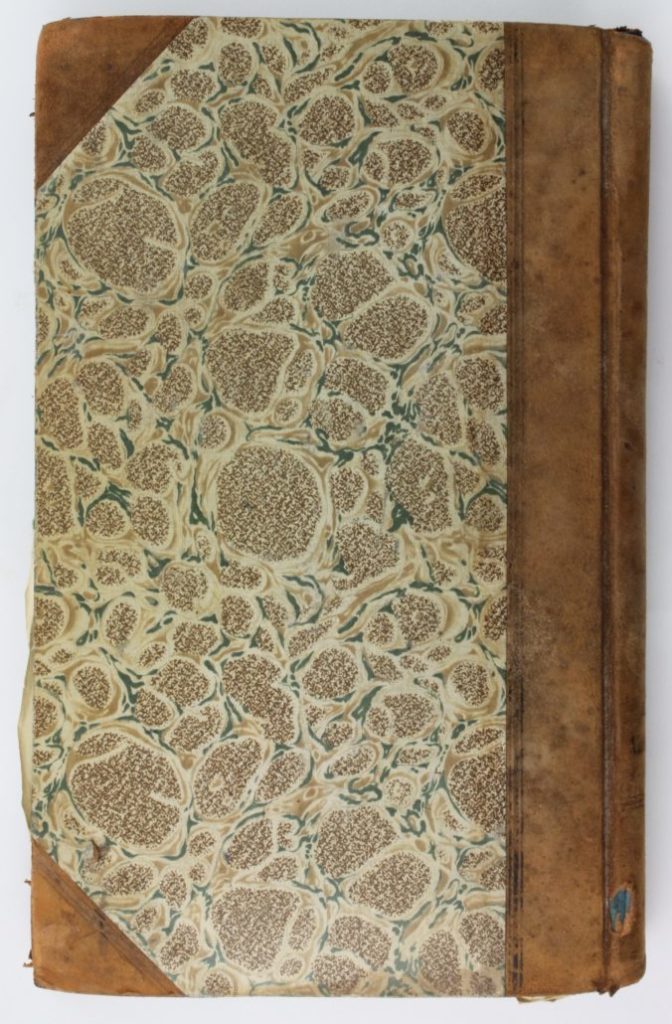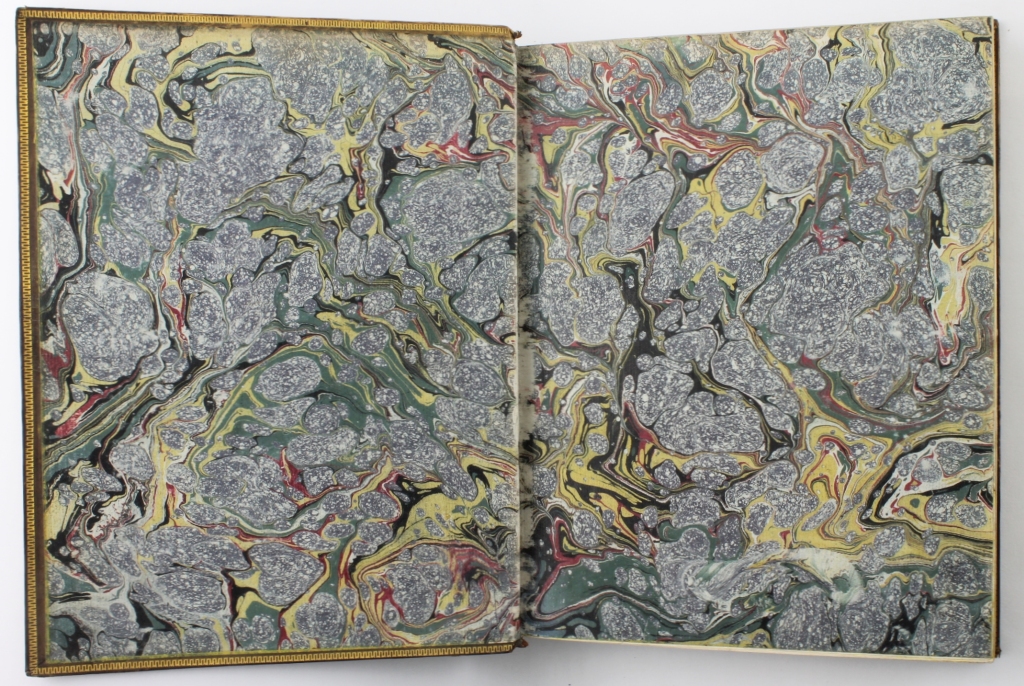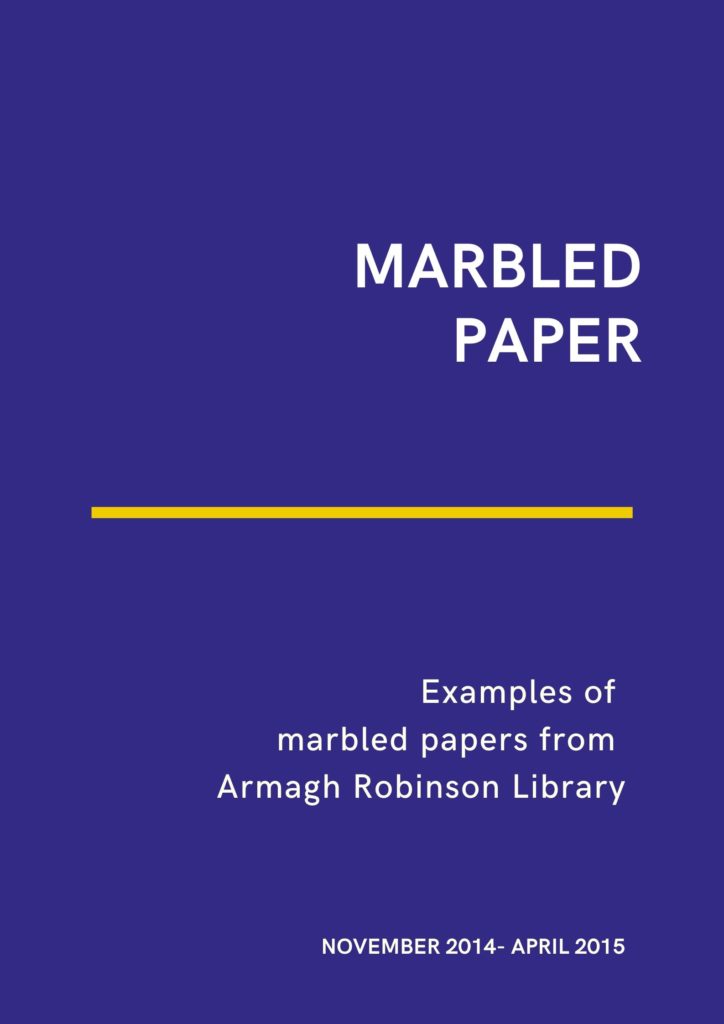
Armagh Robinson Library holds wonderful examples of marbled papers. This exhibition highlights these examples and explains the various techniques used.
PAPER MARBLING
Paper marbling is a method of decorating the surface of paper with a patterned design. The name is derived from the earliest patterns which resemble marble stone.
It is suggested that paper marbling originated in the Far East in the early 12th Century and spread to Europe, where it became popular around the 1600s.
Initially, marbled papers protected the book block against wear and tear, and marbled book edges protected the block against forgery: the removal of pages would show in the pattern. Later, marbled paper would mostly be used decoratively.
A marbled paper is created by adding paints to a shallow tray filled with size, a thick, sticky liquid. The paints are then manipulated with combs, rakes or movement into the desired design. When the design is finished, a sheet of paper will gently be placed upon the size, to allow the paints to transfer. After the paper is lifted, it is dried.
ANTIQUE STRAIGHT
It is suggested that the Antique straight pattern was made as early as the 17th century.
This pattern is created by creating a feather pattern, which is then showered with fine (usually white) dots.
Inscriptiones Christianae urbis Romae septimo saeculo antiquiores Giovanni Battista di Rossi 1857-1861 P001203122
BOUQUET
The Bouquet pattern first appeared at the end of the 18th century. A Bouquet pattern begins with a Nonpareil base, after which a comb with two sets of teeth is drawn through the bath in loose, wavy lines which causes the Nonpareil lines to fan out.
Ancient and Modern Catalogues of the See Records of Armagh. To Which Is Prefixed a Report on their Present Condition. Armagh MDCCCLX [inserted: Addenda to Reeve's Catalogue of Mss in Primate Registry; Letter from James Leslie on addenda]
William Reeves Armagh (UK)1860P001938572
NONPAREIL
The Nonpareil pattern is one of the most basic of all marbled patterns. It is formed by dropping different paints onto the size.
A comb is then pulled in through the paint horizontally twice, and then once vertically.
Tou en agiois patros ēmōn Athanasiou archiepiskopou Alexandreias ta euriskomena panta = Sancti patris nostri Athanasii archiepiscopi Alexandrini Opera omnia quae extant [...] Athanasius, Saint Patriarch of Alexandria 1777
DOUBLE COMB
The Double comb pattern is based on the Nonpareil pattern.
A Nonpareil pattern is combed through once again vertically, this time with a wider toothed comb.
DAHLIA
The Dahlia pattern is created, firstly by making a Zebra pattern. Large drops of ink are dropped on the size. The drops are combed in a straight line twice.
Large drops of ink are then splattered on. Secondly, for the Dahlia pattern, more colours are lightly splattered on top of the Zebra pattern.
PAPIER COULÉ
Papier Coulé is created by covering a paper with a thin layer of coloured paste. A second colour of paste, diluted, would then be sprinkled on to the first colour.
The paper would then be tilted, and the still wet paste colours would run to form the pattern.
PLACARD
The Placard pattern might be one of the first marbled patterns created and was used for book decoration in France between 1680 and 1740.
The pattern appears to be a combination of elements which later formed the basis of other patterns.
Commentaire Litteral Sur Tous Les Livres de L'Ancien et du Nouveau Testament : Ezechiel, et Daniel Augustin Calmet 1716
FRENCH SHELL
The French Shell pattern in this example is created, firstly by dropping blue ink, mixed with ox gall, into the size. The ox gall makes sure that the ink flows out evenly into large drops.
A red ink, mixed with some oil, is then dropped on, applying medium sized drops. The red ink will drive the blue ink into veins, while the oil in the red ink will create a small white outline.
FRENCH CURL
The French Curl is created with a Turkish pattern, which is made by throwing drops of several colours onto the size.
The first colours narrow with the addition of other colours and become the ‘vein’ colours for the additional inks. For the French Curl pattern, the above pattern is swirled with a stylus or wide toothed comb.
Histoire générale des auteurs sacrés et ecclisiastiques : qui contient leur vie, le catalogue, la critique, le jugement, la chronologie, l'analyse [et] le dénombrement des différentes éditions de leurs ouvrages [...] Rémy Ceillier 1729-1763 P00118282
SPANISH WAVE
The Spanish Wave pattern is also created with a Turkish pattern. The pattern can be swirled or combed.
When the pattern is created, the paper is gently lowered onto the size. The water is then agitated to create a rippled fabric effect.
The Holy Bible, translated from the Latin Vulgat: diligently compared with the Hebrew, Greek, and other Editions in divers languages; the Old Testament, first published by the English College at Doway, A. D. 1609; and the New Testament, first published by the English College at Rhemes, A. D. 1582. [...] John Thomas Troy 1816 P000986417
Keeper's Reports, submitted to the Governors and Guardians of the Public Library of Armagh, at the Annual Meeting, 1862 -1978 Armagh Public Library 1862 -1978 P002267809
ROMANTIC
The Romantic pattern was created in Germany in the 18th century. To create the pattern an earthy ground colour would form the first layer on the paper.
A glazing paste with caustic elements would then be added, which causes the breaking of the ground colour.
Astuatsashunchʻ Girkʻ Hin ew Nor Ktakaranatsʻ : ebrayakan ew hunakan bnagirnerēn tʻargmanuats = The Holy Bible in Modern Western Armenian H.G.O. Dwight 1857 P00118117x
Keeper's Reports, submitted to the Governors and Guardians of the Public Library of Armagh, at the Annual Meeting, 1862 -1978 Armagh Public Library 1862-1978 P002267809
STORMONT
This pattern is started with a Turkish base. One or more colours would then be mixed with a dispersant, such as turpentine, and thrown onto the bath.
These dispersant-mixed colours will appear to be covered with tiny holes.
The Works of the Right Rev. William Warburton, Lord Bishop of Gloucester William Warburton 1788 P00099902
Further reading
Article by Emma Hassard which accompanied the exhibition.
Resource for types and techniques of decorated papers from the University Libraries Univistriy of Washington.

